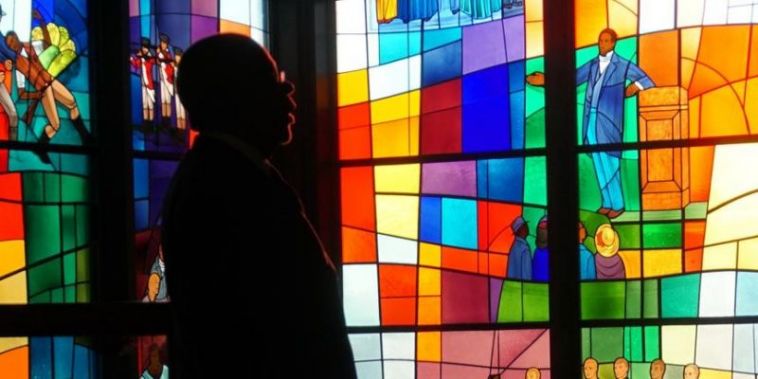Media Instead Chase White Evangelicals
Broadcast Leaders Rally in Praise of Limbaugh
New Administration to Swap ‘Alien’ for “Noncitizen’
$22 Million Drive to Fight Latino Disinformation
‘Fire in the Belly’ About the Supremes’ Mary Wilson
. . . ‘Good for Readers to Have That Depth of Knowledge’
Balta Joins Contributors at Chicago Reporter
Diversity Audit Scorches Philadelphia Inquirer
Diversity Gains at Public Media Stations
Ida B. Wells Group Gives $100K to CUNY J-School
Passings:
— Katherine Creag
— John Garcia
— Karen Hudson-Samuels
— Terez Paylor
Short Takes
Support Journal-ismsMedia Instead Chase White Evangelicals
If the news media are serious about improving their coverage of African Americans and other people of color, they can start with their coverage of the Black church.
According to a new Pew Research Center survey released this week, “Black Americans are more religious than the American public as a whole on a range of measures of religious commitment. For example, they are more likely to say they believe in God or a higher power, and to report that they attend religious services regularly.
“They also are more likely to say religion is ‘very important’ in their lives and to be affiliated with a religion, and to believe prayers to ancestors have protective power and that evil spirits can cause problems in a person’s life.”
Pew surveyed more than 8,600 Black adults (ages 18 and older) to produce the center’s “first large-scale, nationally representative survey designed primarily to help understand distinctive aspects of Black Americans’ religious lives,” Besheer Mohamed, Kiana Cox, Jeff Diamant and Claire Gecewicz wrote. For comparison, “researchers also asked some of the same questions of 4,574 Americans who do not identify as Black or African American.”
The report was issued the same day PBS debuted its well-received two-part series, “The Black Church: This Is Our Story, This Is Our Song,” which can still be viewed at pbs.org.
“To call the four-hour series kaleidoscopic would be to undersell its breadth,” television editor Matt Brennan wrote Tuesday for the Los Angeles Times. The series documents the influence of the Black church as central to the heartbeat of America in ways one would not have imagined.
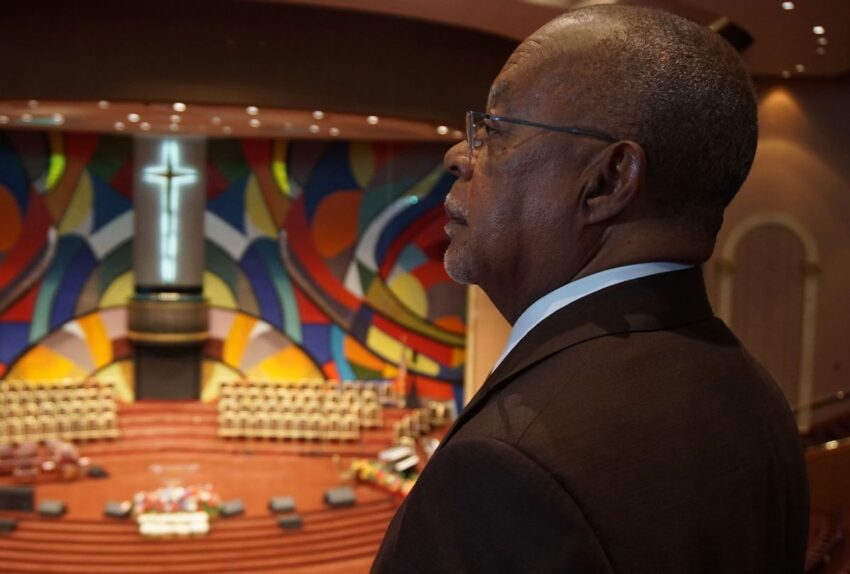
Given that, Journal-isms asked Harvard scholar Henry Louis Gates Jr., who hosted, wrote and executive-produced the documentary, what his presentation tells us about journalism.
“No, the press doesn’t cover the depth and range of The Black Church sufficiently,” Gates messaged. “So many good stories to be written, especially as the church adapts its focus to social justice issues, including matters of health, such as the color of Covid.”
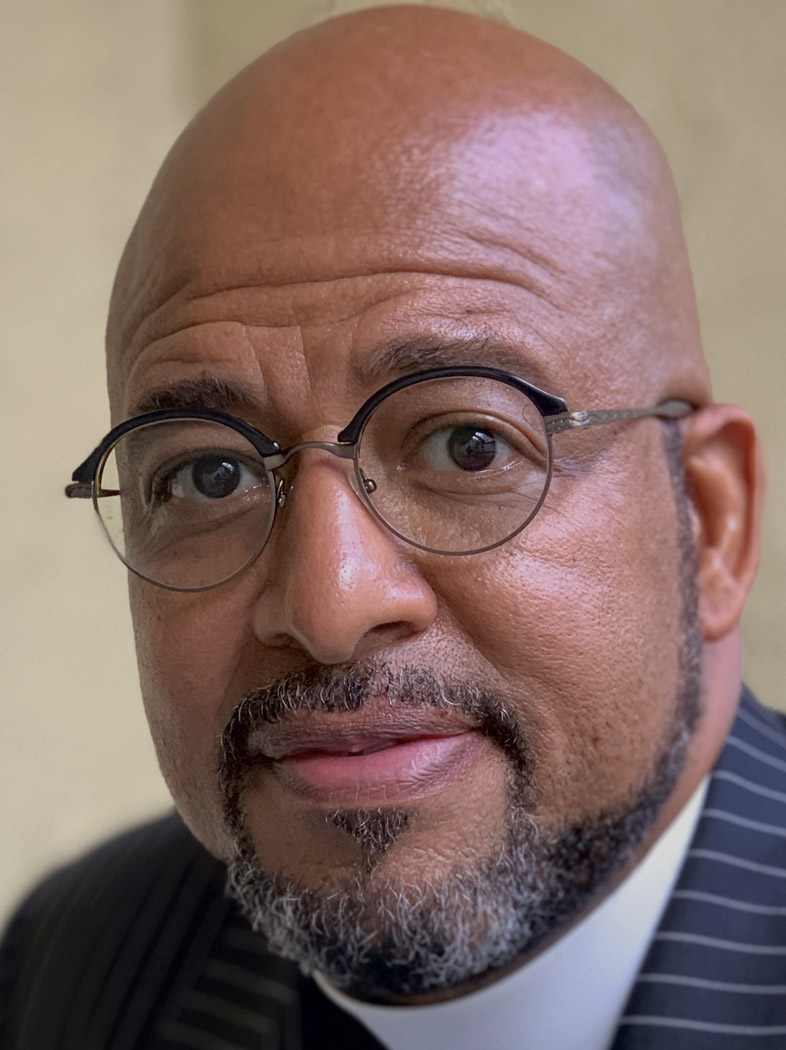 That sentiment was echoed by the Rev. Kenny Irby (pictured), a onetime newspaper photographer and former visual journalism and diversity group leader at the Poynter Institute.
That sentiment was echoed by the Rev. Kenny Irby (pictured), a onetime newspaper photographer and former visual journalism and diversity group leader at the Poynter Institute.
“One of, if not the biggest credibility problem of mainstream media is the neglect to cover faith and spirituality issues period,” Irby messaged Friday. “Thus, ethnic media and alternative press outlets experience far more penetration in and loyalty from the African American community.”
The mainstream media have instead chased white evangelicals, Brennan wrote. “At least since Orange County coffee klatches and erstwhile Southern strategists swept Ronald Reagan into the White House, consuming political news in this country has meant confronting the seemingly inexorable rise of one ‘interest group’ in particular: evangelical Christians,” he reported.
Brennan also wrote, “If the name applied to the phenomenon changed — Moral Majority, culture warriors, values voters, the religious right — 40 years of media coverage nonetheless established it as a coherent and remarkably powerful force, one whose unifying feature was as much demographic as it was doctrinal. In this reckoning, evangelical Christians were conservative, rural and white.
“In point of fact — as PBS’ excellent new docuseries ‘The Black Church: This Is Our Story, This Is Our Song’ details — evangelicalism in America predates not only Reagan but also America itself, and from its origins in the itinerant revivalism of colonial Virginia, it has squared space for radical forms of Black-led religious expression, social life and political organization.
“To erase Black denominations from the popular understanding of evangelical Christianity is to render the institution ‘invisible’ again, as it was in the antebellum South, despite its profound influence. After all, it is Black evangelicalism — often in direct opposition to its white counterpart — that propelled the abolition of slavery and the civil rights revolution, as well as the development of gospel, blues, jazz, even disco. . . .”
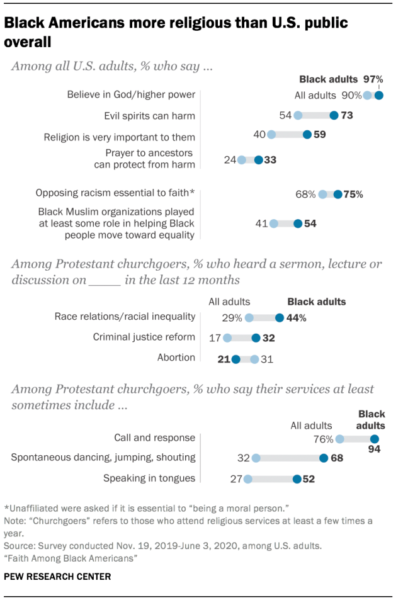
The Pew study produced other findings:
“Today, most Black adults say they rely on prayer to help make major decisions, and view opposing racism as essential to their religious faith. Also, predominantly Black places of worship continue to have a considerable presence in the lives of Black Americans: Fully 60% of Black adults who go to religious services – whether every week or just a few times a year – say they attend religious services at places where most or all of the other attendees, as well as the senior clergy, are also Black . . .
“Far fewer attend houses of worship with multiracial congregations or clergy (25%) or congregations that are predominantly White or another race or ethnicity, such as Hispanic or Asian (13%). . . .
“Younger Black adults [are] less likely to attend predominantly Black congregations. But these patterns appear to be changing. . . . young Black adults are less religious and less engaged in Black churches than older generations. Black Millennials and members of Generation Z are less likely to rely on prayer, less likely to have grown up in Black churches and less likely to say religion is an important part of their lives. Fewer attend religious services, and those who do attend are less likely to go to a predominantly Black congregation.”
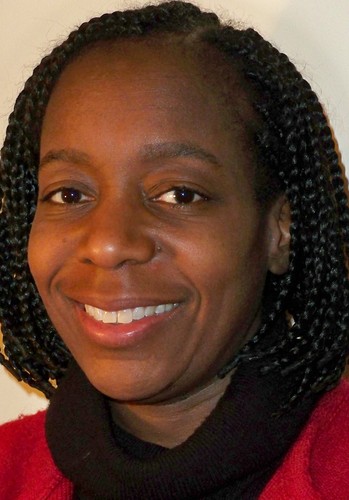 Adelle Banks (pictured) wrote about the report for Religion News Service and moderated a Pew panel about it on Tuesday.
Adelle Banks (pictured) wrote about the report for Religion News Service and moderated a Pew panel about it on Tuesday.
“There are a couple of key takeaways (though I recommend journalists read the report to gain more insights),” she messaged.
“I asked the lead author about this and he agreed: ‘He said the breadth of the study could help dispel the notion that the Black church is monolithic and could also demonstrate that there is more to Black religious life than what happens in church.’
“The study also highlighted the religion-related (as well as other) differences among Black Americans based on age and place of birth.”
- Black Christian News Network One: PODCAST: Black Church PAC Celebrates After Senate Races in Georgia (Jan. 8)
- Daniel A. Cox, American Enterprise Institute: Rise of conspiracies reveals an evangelical divide in the GOP (Feb. 12)
- Elizabeth Dias, New York Times: A Century Ago, White Protestant Extremism Marched on Washington (Feb. 7, updated Feb. 10)
- Julia Duin, Politico Magazine: The Christian Prophets Who Say Trump Is Coming Again
- Robert P. Jones, NBC Think: Trump’s election support from evangelicals shows we’re the biggest obstacle to racial justice (Nov. 16)
- Journal-isms: Will Church Banners Afire Connect the Dots?
- Rachel Martin, NPR: New Survey Shows 3 In 5 White Evangelicals Say Joe Biden Wasn’t Legitimately Elected
- Natachi Onwuamaegbu, Boston Globe: Henry Louis Gates Jr. on his new documentary and the role of the Black church in social justice (Feb. 14)
(Credit: NewsOne)
Broadcast Leaders Rally in Praise of Limbaugh
With the notable exception of the National Association of Black-Owned Broadcasters, which declined comment, leaders of the radio industry praised talk-show host Rush Limbaugh after his death Wednesday from complications of lung cancer. Limbaugh was 70.
In its official statement, the National Association of Broadcasters said, “Rush Limbaugh was a trailblazer on broadcast radio who brought a vast listenership to radio in general and to the AM band in particular. NAB extends condolences to his family, friends and the millions of listeners who will miss his unique presence on radio.”
The trade publication Radio Ink quoted several radio industry figures and said, “In addition to being . . . credited with spreading the Conservatism movement across the country, Rush is known for saving AM Radio and inventing talk radio.”
Meanwhile, Doris Truong wrote Thursday for the Poynter Institute, “It’s surprising that some of the news stories deemphasized a key part of his legacy: his racist vitriol.
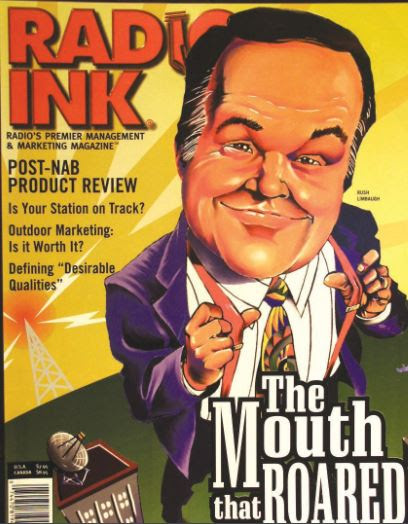 “He had wide influence as an undisputed conservative radio icon. He was known for punching down: He disputed that North American Indigenous populations were victims of genocide, depicted Black people as criminals, equated illegal immigration from Mexico to the storming of Normandy, and made a mockery of Asian languages. . . .
“He had wide influence as an undisputed conservative radio icon. He was known for punching down: He disputed that North American Indigenous populations were victims of genocide, depicted Black people as criminals, equated illegal immigration from Mexico to the storming of Normandy, and made a mockery of Asian languages. . . .
“AP did not need to hedge that detractors accused him of hateful commentary. AP updated its style in 2019 so that when something is racist, it can be called that.”
To be sure, mainstream media did not join the broadcast industry in its accolades.
The New York Times’ headline online was, “Rush Limbaugh Dies at 70; Turned Talk Radio Into a Right-Wing Attack Machine: With a following of 15 million and a divisive style of mockery, grievance and denigrating language, he was a force in reshaping American conservatism.”
And in his Washington Post column, media writer Erik Wemple issued a corrective to the praise: “Limbaugh did indeed drive policy — by hatred and mendacity, a little detail that’s important to include in any retrospective on his career. Fox Nation’s ‘Rush Limbaugh: His Words’ managed to exclude these particular words that Limbaugh uttered en route to his fame, fortune and influence,” Wemple said, listing some of the talk-show host’s racist and sexist greatest hits. News One did a similar compilation under the headline, “Rush Limbaugh’s Most Racist Quotes: A Timeline Of Destructive Commentary.”
- Elvia Diaz, Arizona Republic: Divisive radio host Rush Limbaugh is dead. No wonder ‘rot in hell’ is trending on Twitter
- Ken Meyer, Mediaite: Fox’s Kurtz Blasts ‘Ghoulish Glee’ From ‘Twisted People’ Celebrating Rush Limbaugh’s Death
- Bob Moser, Rolling Stone: Rush Limbaugh Did His Best to Ruin America
- Dominic Patten, Deadline: Craving The Spotlight, Donald Trump Sets Rush Limbaugh Tributes Tonight On Fox News, OAN & Newsmax
- Victor Pickard, Washington Post: The Fairness Doctrine won’t solve our problems — but it can foster needed debate
- Jeremy Peters, New York Times: Rush Limbaugh’s Legacy of Venom: As Trump Rose, ‘It All Sounded Familiar’
- Greg Sargent, Washington Post: From Limbaugh to Trump: A historian of the right wing explains Rush’s real legacy
- Charles Sykes, Washington Post: We’re living in the world Rush Limbaugh created
- Al Tompkins, Poynter Institute: How Rush Limbaugh’s rise after the gutting of the fairness doctrine led to today’s highly partisan media
- Nigel Thompson, Al Día, Philadelphia: Three times Rush Limbaugh attacked the Latino community
- Alex Walker, Media Matters for America: Rush Limbaugh sold listeners a false reality — and we’re all still paying for it
New Administration to Swap ‘Alien’ for ‘Noncitizen’
“The Biden administration is urging officials to use more inclusive terms for immigrants, including replacing the word ‘alien’ with ‘noncitizen,’ Axios has learned,” Stef W. Kight reported for Axios on Tuesday.
“Why it matters: The Trump administration referred to unauthorized immigrants as ‘illegal aliens’ and described border crossings as an ‘invasion.’ The new terms point to President Biden’s more welcoming immigration stance overall.”
The term ‘”alien” is so distasteful to many Latino and Asian American activists that in 2019, the National Association of Hispanic Journalists disinvited Fox News as a sponsor of its convention. NAHJ returned $16,666 after Fox Radio host Todd Starnes’ comments about “a rampaging horde of illegal aliens” in reference to Latin American migrants.
- James Goodman, The Progressive: A Chance for New Beginnings — What Joe Biden could do to bring humanity and good sense to U.S. immigration policy.
- Eugene Robinson, Washington Post: Biden’s immigration plan is ambitious. But a big problem demands a big plan.
- Kimmy Yam, NBC News: How Biden can undo the divisions Trump deepened in immigrant communities (Feb. 1)
$22 Million Drive to Fight Latino Disinformation
“A Latino advocacy group and media watchdog will invest $22 million in an effort to battle disinformation targeted at the Hispanic community,” Rebecca Beitsch reported Thursday for The Hill.
“Voto Latino and Media Matters for America on Thursday launched the Latino Anti-Disinformation Lab, with an aim to ‘combat mis- and disinformation that further polarizes and isolates Latinx voters.’
“According to the groups it will be the largest investment in combatting disinformation in Latino communities to date, citing a surge in Spanish and English language misinformation on voter fraud and Covid-19.
“ ‘The right-wing sphere has spent years building a misinformation machine to target the Latinx community, which has resulted in a rising tide of disinformation. Despite how overwhelming it may seem, it is both possible and absolutely necessary to confront misinformation head on. This partnership will provide an essential check on that rising tide of disinformation,’ Media Matters President Angelo Carusone said in a release.”
The announcement did not disclose the source of the $22 million.
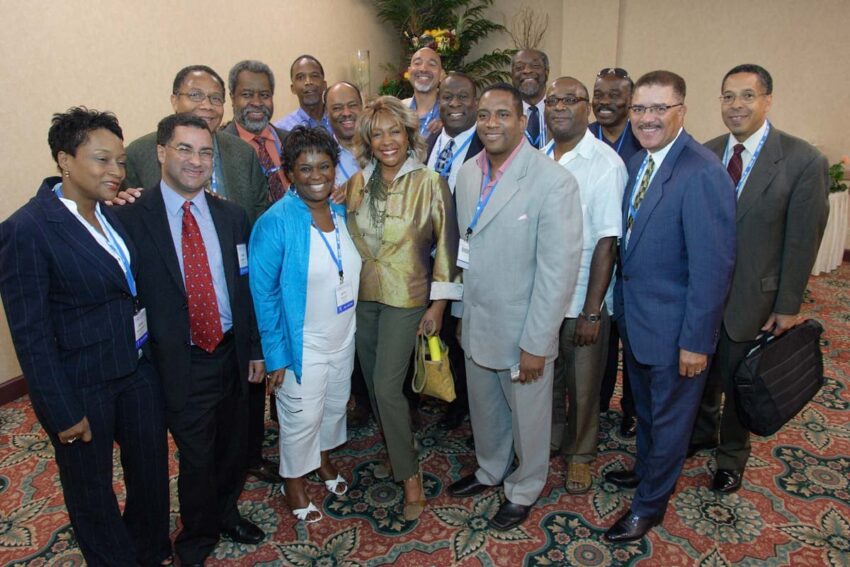
‘Fire in the Belly’ About the Supremes’ Mary Wilson
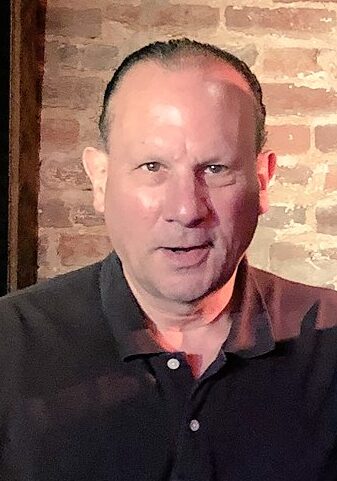 Harry Schnipper (pictured), the owner of Washington’s Blues Alley jazz club, managed Mary Wilson, one of the original Supremes. He acknowledges that he did not read all of the obituaries of the diva who died Feb. 8 at age 76. But Schipper told Journal-isms he didn’t think the ones he did peruse “got down to the meat of her life.”
Harry Schnipper (pictured), the owner of Washington’s Blues Alley jazz club, managed Mary Wilson, one of the original Supremes. He acknowledges that he did not read all of the obituaries of the diva who died Feb. 8 at age 76. But Schipper told Journal-isms he didn’t think the ones he did peruse “got down to the meat of her life.”
The writers didn’t appear to have “that fire in the belly” about their subject, Schnipper said, and “if you can’t bring your characters to life, you shouldn’t be a journalist.”
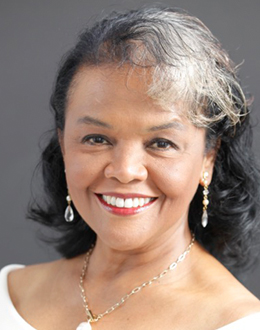 Maybe you had to have been there. And journalists were among the many of those who were. One was Barbara Rodgers (pictured), retired news anchor and reporter at KPIX-TV in San Francisco, who recalled on Facebook seeing the Supremes on the “Ed Sullivan Show” in the early 1960s.
Maybe you had to have been there. And journalists were among the many of those who were. One was Barbara Rodgers (pictured), retired news anchor and reporter at KPIX-TV in San Francisco, who recalled on Facebook seeing the Supremes on the “Ed Sullivan Show” in the early 1960s.
“It wasn’t that often that we saw Black people on TV, especially not ones who looked like the Supremes — glamorous, perfectly coiffed and made up and often dressed in spectacular evening gowns,” Rodgers wrote. . . . and like so many Black girls and young Black women, I was enthralled by those three young Black women who inhabited a world light years away from the one that was my world in those days. It was a world I could only dream about ever being a part of.”
Forty years later, “something happened that young Barbara couldn’t possibly have imagined — I was actually interviewing one of the original Supremes, Mary Wilson. She was still beautiful and a delightful person to interview; and of course, I couldn’t resist taking a campy photo with her, mimicking one of the signature moves the Supremes would do when they performed their hit, ‘Stop In The Name Of Love.’
“Yesterday, when I saw the news that Mary Wilson had died quite suddenly, I was shocked and felt so sad, just as though I had lost a friend. Of course she and I were not friends, but on that day that I met and spent time with her 15 years ago, she certainly made me feel like a friend and she understood how far I had come from my childhood life because she had, too.”
For those writing with that “fire in the belly,” one could turn to the news media in Wilson’s hometown, Detroit. In the Motor City, Susan Whitall at the Detroit News has made herself the go-to writer on Motown. Technically, she retired, having taken a buyout in 2016. But that’s a technicality.
In an email, Whitall picks up the story.
. . . ‘Good for Readers to Have That Depth of Knowledge’
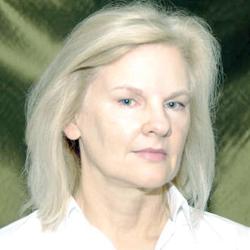 “The News has me doing advance obits on people I’ve reported on, and yes, a lot of them are in the Motown world, although many are not,” Susan Whitall (pictured) wrote Journal-isms. “Mary’s death was a surprise, sadly. She was so busy and vibrant, including the last time I did a lengthy interview with her, in 2019. So this was a deadline assignment. I went to bed early Monday night, and didn’t hear about her death until the next morning, early. By the time my editor called at 8 a.m., I had some notes started, and I’d looked up several previous interviews I’d done with Mary.
“The News has me doing advance obits on people I’ve reported on, and yes, a lot of them are in the Motown world, although many are not,” Susan Whitall (pictured) wrote Journal-isms. “Mary’s death was a surprise, sadly. She was so busy and vibrant, including the last time I did a lengthy interview with her, in 2019. So this was a deadline assignment. I went to bed early Monday night, and didn’t hear about her death until the next morning, early. By the time my editor called at 8 a.m., I had some notes started, and I’d looked up several previous interviews I’d done with Mary.
“As for how I first became interested in Motown — like many in metro Detroit, I was a kid listening to the radio, and Motown was all over. We were lucky, we heard in-person interviews on Detroit radio, saw them on TV (on Robin Seymour’s Swingin’ Time on Windsor Channel 9), and saw them around town as well. I attended a teen press event at Cobo Hall that featured a press conference of sorts with the Supremes, and that was a kick.
“I also got to see them perform at the Michigan State Fair in 1967, although I had to push one of my little brothers in a stroller, to my chagrin. But we were able to see so many Motown stars in family-friendly settings like that. I saw the Tempts,” as the Temptations were often called, “that way, as well. Motown was a passion all metro Detroit kids seemed to have, whether urban, suburban, white or black. I love that it brought us together that way, and still does.
“Then I became a music journalist at 22, and although Creem, the rock journal I worked for didn’t cover all the Motown acts, we covered many. I developed professional relationships with Motown’s PR department, with Motown in Detroit (Esther Gordy Edwards), etc. By the time I was at the Detroit News in 1983, I was covering a lot of Motown, as it was enjoying a resurgence, and the museum was being launched here in town. I covered it when Hitsville got its historical plaque, and over the years I interviewed and got to know many of the acts I’d grown up hearing on the radio. The Four Tops, Smokey, Martha…,” Whitall wrote, referring to Smokey Robinson and Martha Reeves.
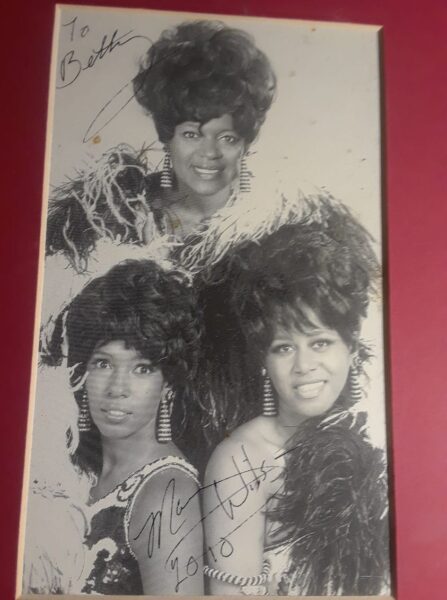
“In ’95 my book ‘Women of Motown’ came out. It was an oral history of many of the key women at the label. A second edition came out two years ago.
“As far as obits, as a staffer — I’ve done Levi Stubbs, Bobby Rogers of the Miracles, Obie Benson of the [Four] Tops. As a post-staffer, [former Temptation] Dennis Edwards of course, and Barney Ales, the head of sales. It helps that I know many of them. I’d been to Levi’s home, to talk to him about his childhood, growing up with Little Willie John, for my book on Willie. I went over with Willie’s two sons, who are both singers, and it was a riot of singing and laughing, in between gleaning facts from Levi that I needed. Between that and other interviews, I was able to weave a lot of background about him into my obit.
“In Detroit, the funerals of Motown stars are huge events. There’s sadness, but also a lot of pride and ceremony. Our readers relish in-depth stories about the lives of their favorites.
“The News is good about tapping its veteran reporters with knowledge in particular areas — they recently made headlines nationally, when sports writer Jerry Green, 92 I think he is, covered the Super Bowl. He’s retired, but writes occasionally. He’s the last man standing, to have covered every single Super Bowl since the beginning. I think it’s good for readers to have that depth of knowledge to tap, when needed.”
- Billboard: Founding Member of Supremes Mary Wilson Dies at 76 in Las Vegas (video)
- Stacy M. Brown, National Newspaper Publishers Association: IN MEMORIAM: Keeping the Legacy of Legendary Supremes Star Mary Wilson Alive (Feb. 9)
- Larry Buford, EURWeb.com: Mary Wilson: Reflections of a Supreme Journey! – by Scherrie Payne (Feb. 14)
- Bob Davis, Soul Patrol: Soul-Patrol Spotlight Eulogy from Susaye Greene (Feb. 9) (video)
- Christie D’Zurilla, Los Angeles Times: Diana Ross reflects on Mary Wilson’s death: ‘The Supremes will live on in our hearts’ (Feb. 9)
- Jackie Kostek, KTNV-TV, Las Vegas: Motown legend Mary Wilson’s ‘musical daughters’ remember her as encouraging, kind (Feb. 9)
- Brian McCollum, Detroit Free Press: In Motown’s tight-knit family, Mary Wilson was beloved: ‘One of the most precious spirits’
- Showtime: Hitsville: The Making of Motown (YouTube) (2019)
- Derrick Bryson Taylor, New York Times: Mary Wilson, an Original Member of the Supremes, Dies at 76 (Feb. 9)
- Susan Whitall, Detroit News: ‘The supreme of the Supremes’: Mary Wilson was avid ambassador of Detroit, Motown (Feb. 9, updated Feb. 10)
- Mikael Wood, Los Angeles Times: How Mary Wilson and the Supremes changed the way America viewed Black music (Feb. 9)
Balta Joins Contributors at Chicago Reporter
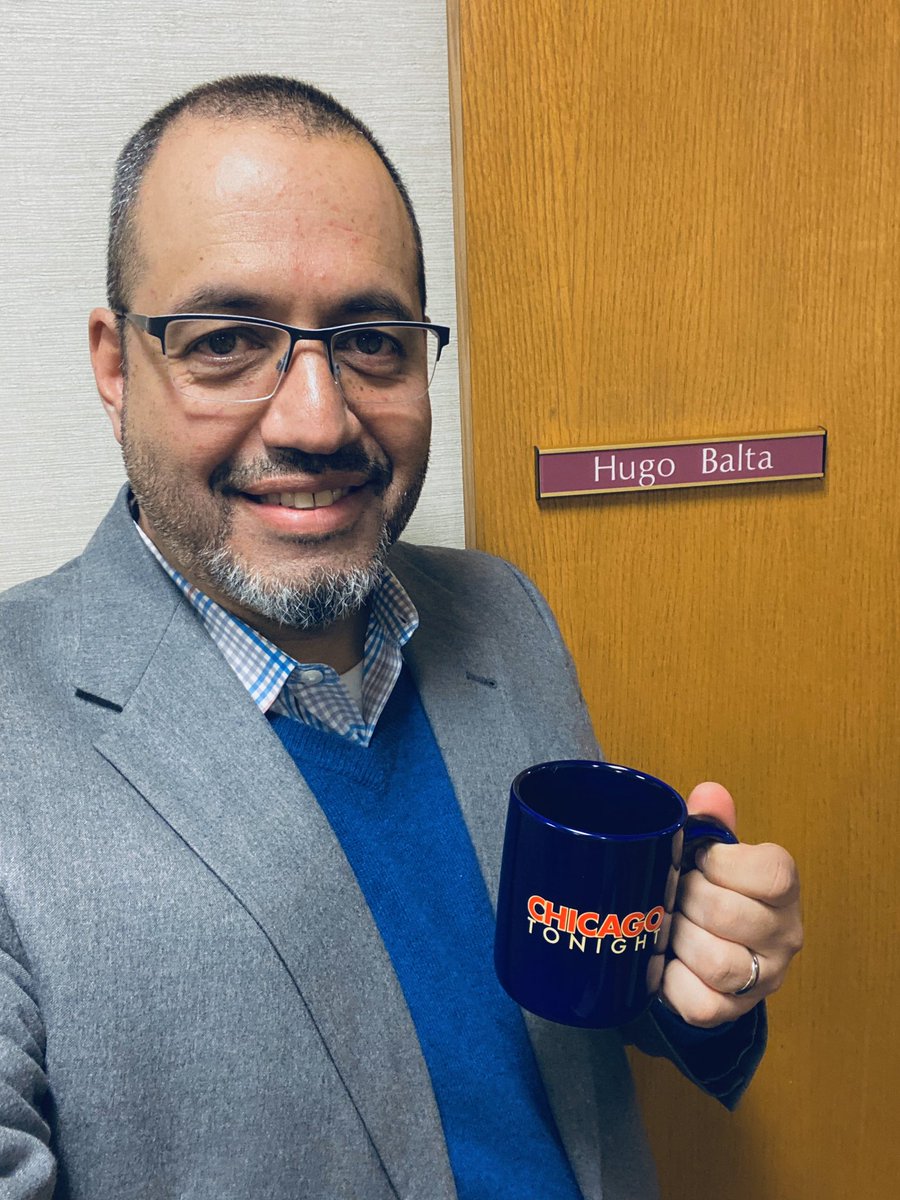 Hugo Balta (pictured), forced out as news director of Chicago’s public television station WTTW, will be part of a columnists rotation at the investigative Chicago Reporter, Balta and Glenn Reedus (pictured, below), interim editor and publisher, messaged Journal-isms.
Hugo Balta (pictured), forced out as news director of Chicago’s public television station WTTW, will be part of a columnists rotation at the investigative Chicago Reporter, Balta and Glenn Reedus (pictured, below), interim editor and publisher, messaged Journal-isms.
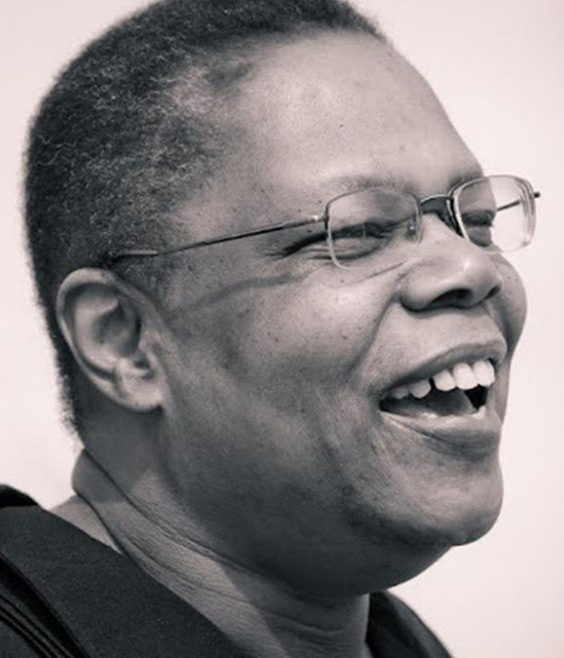 “I chose Hugo because he has one of, if not the broadest reach in the Latinx community here of any news person,” Reedus said of the two-time president of the National Association of Hispanic Journalists.
“I chose Hugo because he has one of, if not the broadest reach in the Latinx community here of any news person,” Reedus said of the two-time president of the National Association of Hispanic Journalists.
“I want The Reporter to be even more representative in the city’s immigrant, Black, Latinx and Muslim communities which is why I also asked Nadine Naber of the University of Illinois at Chicago and Dr Lance Williams of Northeastern Illinois University to also be contributing writers. They will alternate writing weekly columns about issues in their respective communities.”
Balta messaged Friday, “The Chicago Reporter has a solid reputation on covering issues of inequality seldom given the focus and time needed by mainstream media. I am grateful for the opportunity to join The Chicago Reporter in serving a critical role in Chicago and the nation of addressing longstanding racial inequalities plaguing Latinos and marginalized communities.”
He added on Saturday, “I will also have the opportunity to host an audio program — work I began to do as host of Chicago Tonight: Latino Voices.”
- Laura S. Washington, The Nation: What’s Happening to ‘The Chicago Reporter’? (Jan. 15)
- Julian Wyllie, Current: Former WTTW news director says colleagues’ objections to social media posts prompted ‘unfair’ firing
Diversity Audit Scorches Philadelphia Inquirer
“The Philadelphia Inquirer has an overwhelmingly white newsroom and fails to retain journalists of color, resulting in news coverage that overrepresents people who are white and male, an independent review released this week found,“ Anna Orso and Jesenia De Moya Correa reported Feb. 12 for the Inquirer.
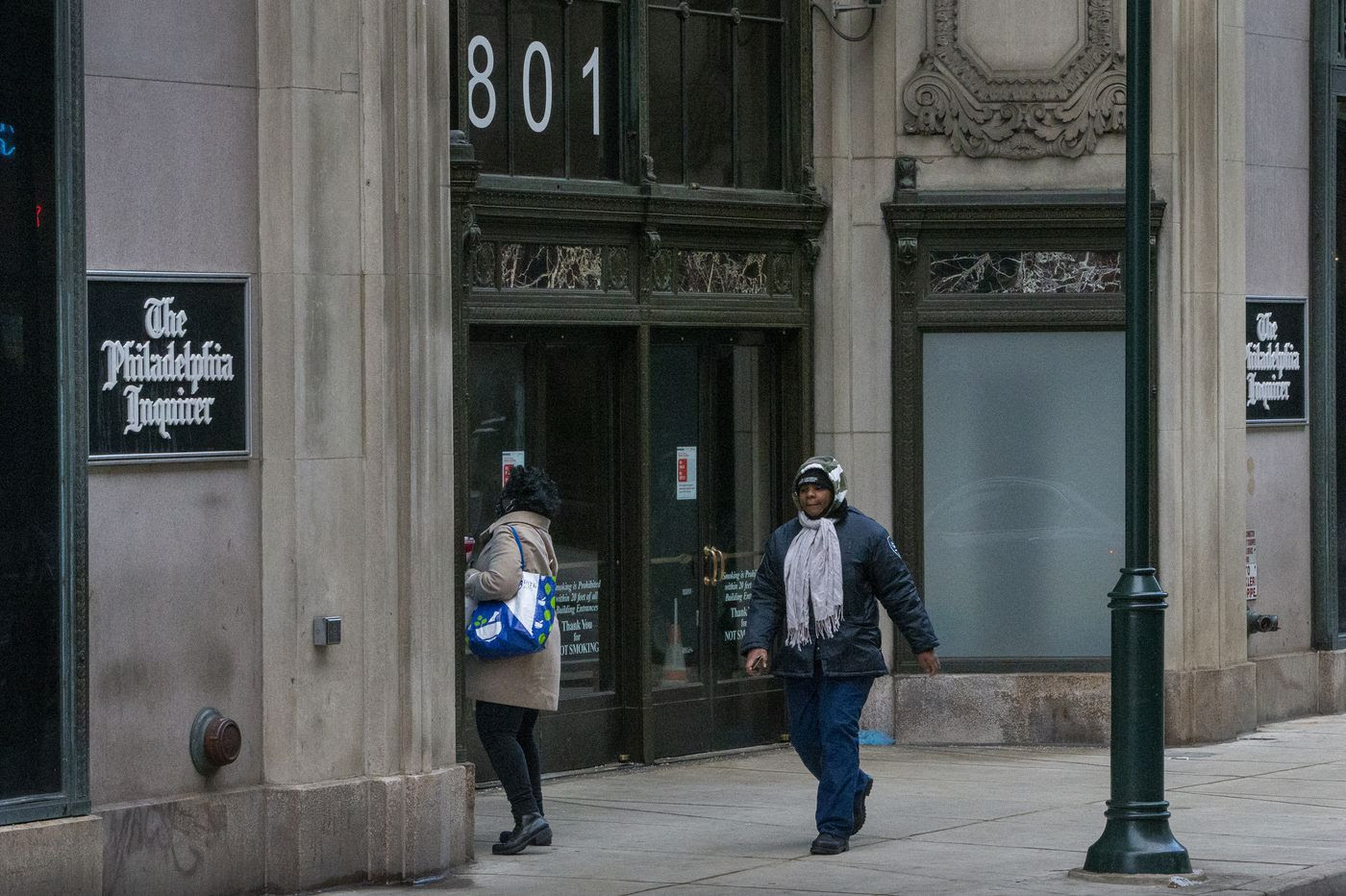 “The audit, commissioned by The Inquirer (building photo by Alejandro A. Alvarez/Philadelphia Inquirer) and conducted by researchers at Temple University, found that out of 14,000 people featured in a sample of 3,000 articles, photos, and videos between August 2019 and July 2020, about a quarter were Black, 3% were Latinx, and less than 2% were Asian. Representation of Indigenous people was negligible.
“The audit, commissioned by The Inquirer (building photo by Alejandro A. Alvarez/Philadelphia Inquirer) and conducted by researchers at Temple University, found that out of 14,000 people featured in a sample of 3,000 articles, photos, and videos between August 2019 and July 2020, about a quarter were Black, 3% were Latinx, and less than 2% were Asian. Representation of Indigenous people was negligible.
“Compared to the racial makeup of Philadelphia, the data show all nonwhite people were marginalized. When comparing the coverage to the regional population, Black people were represented proportionally, but only due to heavy representation in sports. Excluding sports stories, Black representation was 19%. Latinx and Asian people were most underrepresented.
“White reporters were more likely to write stories about white people, according to the report, while nonwhite journalists featured subjects who were ‘far more diverse.’ The newsroom is three-quarters white.
“And the researchers, through interviews with 46 newsroom staff and managers, with the promise of anonymity, drew a straight line between The Inquirer’s coverage and its deficiencies in workplace equity and inclusion.
“Taken together, the report describes a newsroom that has for decades allowed racism, discrimination, and cultural incompetency within its walls — an internal culture that many say foments unfair coverage of communities of color.
“Journalists of color told interviewers of severe frustrations that cause them to question why they remain in the field. Several suggested they have racist or discriminatory colleagues. Some raised concerns about pay equity. A handful said change won’t happen unless The Inquirer’s management changes.
“Company and newsroom leadership declined interview requests through a spokesperson. Top editor Gabriel Escobar said in a statement that a newsroom effort is already underway to address ‘many of the issues raised,’ adding: ‘We look forward to working with our colleagues to chart a path forward based on what we have learned.’ . . .
“The audit team was cochaired by Temple journalism faculty members Bryan Monroe and Andrea Wenzel. Monroe at 55 died last month of a heart attack.”
- Ernest Owens, Philadelphia Inquirer: The Inquirer needs a racism intervention
KING-TV, the Tegna station in Seattle, is attempting to address race issues in its newsroom. The effort started with a Zoom workshop about diversity in May 2020 at the same time George Floyd was killed. The company has created a BIPOC (Black, Indigenous and People of Color) employees committee to advise management. It has also hired the Poynter Institute to conduct an audit of the news content for racial bias and train the staff in ‘inclusive journalism.” (video)
Diversity Gains at Public Media Stations
“Men and women held equal shares of jobs at public media stations last year, according to newly released data by CPB, and minorities reached a 10-year high in the proportion of jobs held in the system,” Julian Wyllie reported Feb. 12 for Current.
“CPB” refers to the Corporation for Public Broadcasting, a private, nonprofit corporation created by Congress that is “the largest single source of funding for public radio, television, and related online and mobile services.”
Wyllie added that “race and ethnicity data shows that minorities accounted for 24.7% of employees at CSG-qualified stations last year. Among minorities, Hispanic employees saw a 0.6% increase in their share of jobs from 2011–20, while the percentage of Asian employees grew by 0.7%. The percentage of African American employees declined by 0.4%, and the percentage of white employees fell by 3.1%. Native American employment remained level. . . .”
- Jill Abramson, New York Post: Ex-New York Times boss Jill Abramson responds to unrest at the paper (Feb. 13)
- Nicole Carroll, USA Today: The Backstory: Why newsrooms flourish when diverse voices speak out, create, lead
- Michael Cavna, Washington Post: Newspaper cartooning is dominated by White men. Will a new White House spark change?
- Tauhid Chappell, generocity.org: Racism within CBS should empower the public to demand change in media (Feb. 5)
- Oliver Darcey, CNN: Top editor at The New York Times walks back controversial comment on race amid criticism (Feb. 11)
- Megan Rose Dickey, TechCrunch: Examining the ‘pipeline problem’
- Ahiza García-Hodges, NBC News: News organizations struggle to meet diversity pledges despite key hires
- Colby Hall, Mediaite: Jeff Zucker Talks Diversity of New CNN Lineup: ‘We are Committed to Making Sure That We Also Look Like America’
- Sara Luterman, Nieman Reports: True Newsroom Diversity Must Account for Disability Status, Too
- National Association of Black Journalists: NABJ Calls on AT&T to Hire a Black News Executive to Lead CNN in 2022 (Feb. 10)
- Shula Neuman, St. Louis Public Radio: Editor’s Note: Owning Up To St. Louis Public Radio’s Racist Past (Feb. 9)
- Alex Perry, Daily Northwestern: Medill Black History Month panel discusses race reporting, objectivity
- Joe Pompeo, Vanity Fair: “It’s Chaos”: Behind the Scenes of Donald McNeil’s New York Times Exit (Feb. 10)
- Kimberly Wilson, Essence: New Study Shows That Nearly Half Of Black Professionals Have Faced Blatant Discrimination At Work (Feb. 10)
Ida B. Wells Group Gives $100K to CUNY J-School
The Ida B. Wells Society for Investigative Reporting is granting $100,000 “to a scholarship fund at CUNY’s Craig Newmark Graduate School of Journalism aimed at supporting students who will bring more diversity into the field of journalism,” the school announced Friday.
 “Society co-founders Ron Nixon, Nikole Hannah-Jones, and Topher Sanders announced the gift as part of a campaign by the school to replenish the Ida B. Wells Scholarship Fund, named after the African American journalist, abolitionist, and feminist who led an anti-lynching crusade in the 1890s. Launched in 2018, the fund provides tuition and living expenses for master’s degree students who are members of the Ida B. Wells Society. The organization seeks to increase the ranks and retention of investigative journalists of color and those of all backgrounds who support its mission. . . .”
“Society co-founders Ron Nixon, Nikole Hannah-Jones, and Topher Sanders announced the gift as part of a campaign by the school to replenish the Ida B. Wells Scholarship Fund, named after the African American journalist, abolitionist, and feminist who led an anti-lynching crusade in the 1890s. Launched in 2018, the fund provides tuition and living expenses for master’s degree students who are members of the Ida B. Wells Society. The organization seeks to increase the ranks and retention of investigative journalists of color and those of all backgrounds who support its mission. . . .”
“CUNY’s Newmark J-School is the nation’s most diverse and affordable journalism graduate program and yet it is facing unprecedented state cuts due to coronavirus budget shortfalls,” she added.
Nixon told Journal-isms by telephone Sunday, “We’re investing in their progress.” The grant to CUNY “advances the skills of journalists of color and takes away an excuse that we can’t find people.”
The grant, he said, comes from “a line item in our budget.”
Separately, the Conrad N. Hilton Foundation announced in January that it was granting the society $1 million, (scroll down) at “a time when the ongoing COVID-19 pandemic and tumultuous political climate underscore the importance of vigorous investigative journalism. It said it endorsed the society’s efforts “to strengthen and support the work of journalists of color seeking to hold power accountable.”
Passings
Katherine Creag of NBC’s ‘Today in New York’
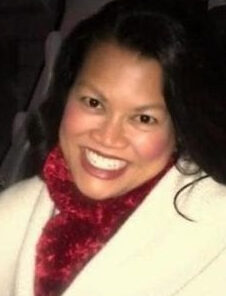 “Katherine Creag (pictured), a reporter for the NBC network’s New York station WNBC, passed away at the age of 47 suddenly on February 10,” She the People reported Friday. ” ‘She was married here, baptised children here, and celebrated countless family milestones here,’ said Cristina Meiser Joseph, a family friend, on Creag’s funeral being held at Upper East Side church.”
“Katherine Creag (pictured), a reporter for the NBC network’s New York station WNBC, passed away at the age of 47 suddenly on February 10,” She the People reported Friday. ” ‘She was married here, baptised children here, and celebrated countless family milestones here,’ said Cristina Meiser Joseph, a family friend, on Creag’s funeral being held at Upper East Side church.”
She was a native of Manila in the Philippines.
“Creag was a renowned face on morning television with her broadcast Today in New York. Creag’s death was unexpected since she hadn’t shown signs of illness and was working on the morning of February 10, before passing away the same evening. The specific cause of her death is not known yet but WNBC . . . reported that she passed away suffering from a medical condition.
“Creag was married to Bill Gafner, also a news reporter for WNBC in New York City for 14 years. Together they have three young children — two daughters named Gemma and Josephine, and a son named Jackson. . . .” WNBC-TV tribute
John Garcia, Digital Journalist and Activist
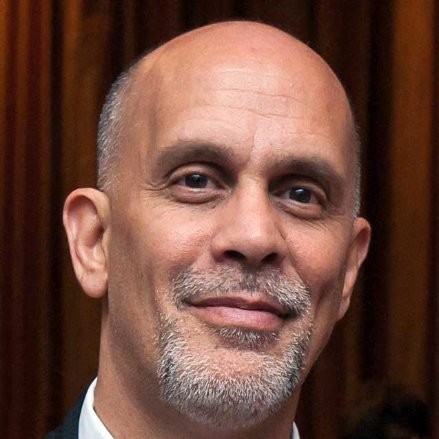 John Garcia (pictured), longtime journalist and former communications director of LatinoJustice-PRLDEF, a Latino civil rights legal defense fund, died Monday at his home in Quincy, Fla., near Tallahassee, Evelyn Hernandez, his former wife of almost 20 years, reported Thursday on Facebook. He was 63. Hernandez messaged Journal-isms that the cause of death had not been determined, but it was not COVID-related.
John Garcia (pictured), longtime journalist and former communications director of LatinoJustice-PRLDEF, a Latino civil rights legal defense fund, died Monday at his home in Quincy, Fla., near Tallahassee, Evelyn Hernandez, his former wife of almost 20 years, reported Thursday on Facebook. He was 63. Hernandez messaged Journal-isms that the cause of death had not been determined, but it was not COVID-related.
A New Yorker, Garcia moved to South Florida and was hired at The Miami Herald in the mid-1980s. “He rode around Miami on a motorcycle and worked in the paper’s Miami-Dade bureaus, where he covered news and wrote a sports column,” Hernandez continued.
“In 1987 he moved to New York City and worked at the Herald Statesman, a Gannett newspaper in Westchester County, Vista Magazine and the New York Daily News. For many years he was a digital journalism professor at New York University. In the late 1990s he became digital news editor at WNBC in New York City and was involved in the coverage of the attacks on the World Trade Center on September 11, 2001. From 2008-2018 he was Communications Director of LatinoJustice-PRLDEF and worked on law reform and advocacy issues affecting the Latino community.
“John served on the Board of Directors of the National Association of Hispanic Journalists in the 1990s and was an active member of the organization for many years, including mentoring journalism students who produced the student newspaper, The Latino Reporter. . . .”
Karen Hudson Samuels, Curated Black Detroit
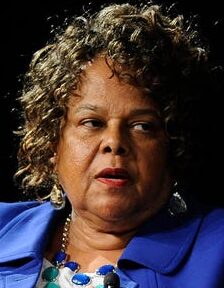 “Pioneering journalist [Karen Hudson Samuels] (pictured)] — a former news director at Detroit’s WGPR-TV, the first Black-owned television station in the United States — died Feb. 9 at her Detroit home,” Nour Rahal reported Saturday for the Detroit Free Press. “She was 68.
“Pioneering journalist [Karen Hudson Samuels] (pictured)] — a former news director at Detroit’s WGPR-TV, the first Black-owned television station in the United States — died Feb. 9 at her Detroit home,” Nour Rahal reported Saturday for the Detroit Free Press. “She was 68.
“Although [Hudson Samuels] worked at WGPR-TV for just a few years before moving on to a career with Ford’s training and development division, she made it her mission late in life to preserve the WGPR studios on East Jefferson as a museum. The station ended its run as a Black enterprise in 1995 when it was bought by CBS and became WWJ-TV. But it will always be known for having launched the television careers of numerous Black Detroiters.
“In January 2017, [Hudson Samuels] presided when the old studios reopened as the William V. Banks Broadcast Museum, named after the station’s founder. Since then, [Hudson Samuels] volunteered to run the museum and fundraise for it almost single-handedly, friends said, until her death. . . .”
Oralandar Brand-Williams added Friday for the Detroit News, “Earlier this month, Mrs. Samuels’ efforts to preserve Detroit’s Black History paid off when the WGPR-TV broadcast museum she founded and curated was designated to the National Register of Historic Places.”
Vincent D. McCraw, president of the Detroit chapter of the National Association of Black Journalists, said, “She devoted her life to making sure Black journalists took advantage of all opportunities in the industry. Karen was a mentor to many. Her work to highlight Black journalists and Black-owned media in the state through her work as chair of the Black Historical Sites Committee of the Detroit Historical Society will be her lasting legacy.”
Terez Paylor, Covered Kansas City Chiefs
“Terez Paylor, a Yahoo Sports senior NFL writer, and a loving partner, brother, son, grandson and friend, died unexpectedly on Tuesday,” Yahoo Sports reported. He was 37.
“Terez came to Yahoo Sports after 12 years at the Kansas City Star, the last five spent covering the Chiefs. He charmed fans and colleagues with his passion for football, and with the twinkling smile that so often washed over his face. He brought juice as a podcast host and on-air personality, and an eagerness to learn to his day-to-day work.”
In the Star, columnist Sam Mellinger wrote, “Terez was so damn smart, both intellectually and with people. He knew his writing was raw when he started here. We talked about that. He asked a million questions to a hundred writers. He studied. He worked. Before you knew it, he was excellent, pridefully planning and producing long features. He did that, with sweat.
“Terez’s genius had nothing to do with turning a phrase, though. He knew football and the people who loved it. He built and executed a plan that quickly made him one of America’s best football beat writers — an enormously competitive field. . . .”
- Dow Jones: Terez A. Paylor Scholarship at Howard University Launched by The Wall Street Journal, Yahoo! Sports and The Kansas City Star (Feb. 23 update)
Short Takes
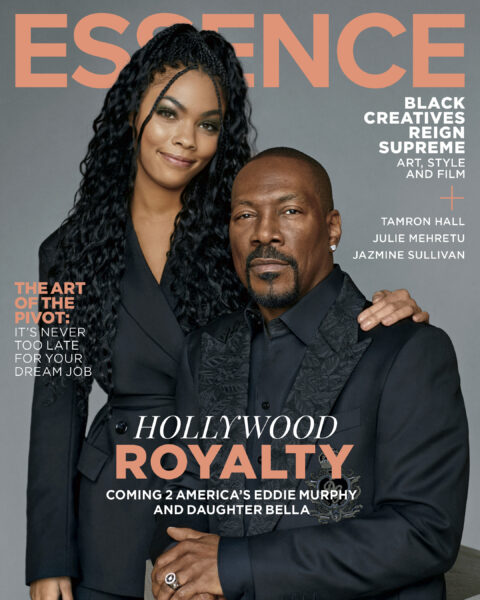
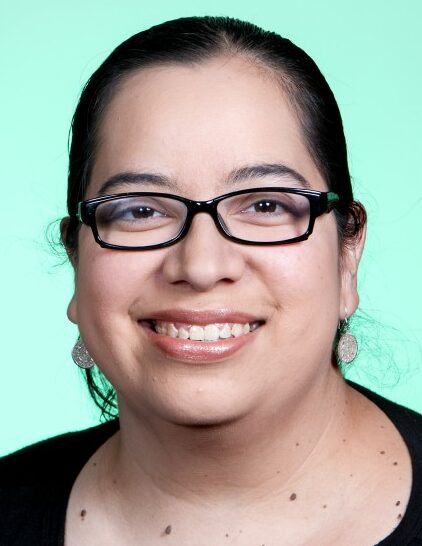 IIliana Limón Romero (pictured) is joining the Los Angeles Times as deputy sports editor, the newspaper announced Thursday. “Iliana has been Sports editor at the Orlando Sentinel since 2018, and her team has won more than a dozen Associated Press Sports Editors awards for its website, special sections, features and project reporting since she joined the Sentinel’s editing staff in 2012. In 2016, while assistant Sports editor at the Sentinel, she and her reporters joined in the newsroom’s coverage of the Pulse nightclub shooting, and she handled many of the Spanish-language interviews. That coverage was a Pulitzer Prize finalist in breaking news.. . .” Referring to the National Association of Hispanic Journalists, the announcement added, “She is the NAHJ Central Florida chapter president and leader of the NAHJ Sports Task Force.”
IIliana Limón Romero (pictured) is joining the Los Angeles Times as deputy sports editor, the newspaper announced Thursday. “Iliana has been Sports editor at the Orlando Sentinel since 2018, and her team has won more than a dozen Associated Press Sports Editors awards for its website, special sections, features and project reporting since she joined the Sentinel’s editing staff in 2012. In 2016, while assistant Sports editor at the Sentinel, she and her reporters joined in the newsroom’s coverage of the Pulse nightclub shooting, and she handled many of the Spanish-language interviews. That coverage was a Pulitzer Prize finalist in breaking news.. . .” Referring to the National Association of Hispanic Journalists, the announcement added, “She is the NAHJ Central Florida chapter president and leader of the NAHJ Sports Task Force.”
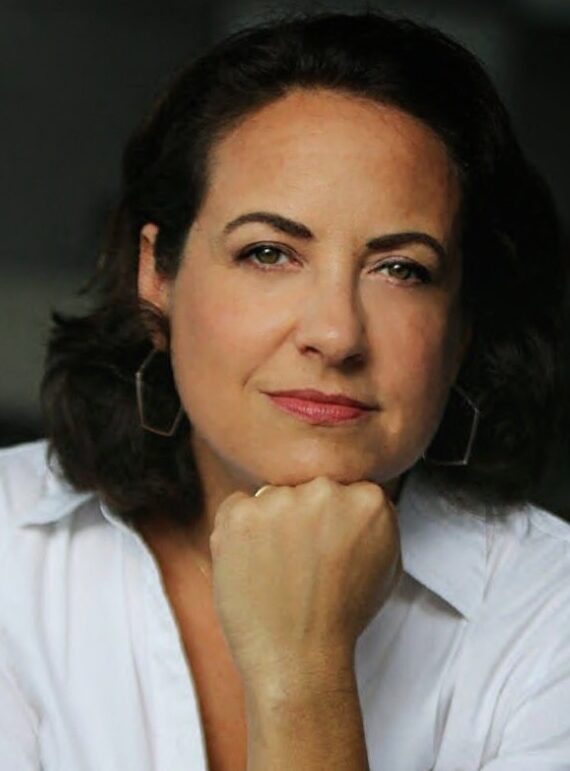 Laura Wides-Muñoz (pictured), executive editor for news practices at ABC News in Washington, is joining the Los Angeles Times next month as deputy editor of the Washington bureau, Kimbriell Kelly, the Times’ first African American Washington bureau chief, announced Wednesday. “Wides-Muñoz has played a major role in ABC’s most ambitious work, overseeing news practices for the network’s recent investigation into allegations of racial inequities in NFL concussion payouts, as well as its coverage of the Mueller investigation, the impeachment of President Trump and the contentious 2020 election. . . .” Following calls last year from staff to diversify the Los Angeles Times newsroom, owner Patrick Soon-Shiong pledged to have a quarter of the Times’ newsroom staff to be Latino over the next five years.
Laura Wides-Muñoz (pictured), executive editor for news practices at ABC News in Washington, is joining the Los Angeles Times next month as deputy editor of the Washington bureau, Kimbriell Kelly, the Times’ first African American Washington bureau chief, announced Wednesday. “Wides-Muñoz has played a major role in ABC’s most ambitious work, overseeing news practices for the network’s recent investigation into allegations of racial inequities in NFL concussion payouts, as well as its coverage of the Mueller investigation, the impeachment of President Trump and the contentious 2020 election. . . .” Following calls last year from staff to diversify the Los Angeles Times newsroom, owner Patrick Soon-Shiong pledged to have a quarter of the Times’ newsroom staff to be Latino over the next five years.
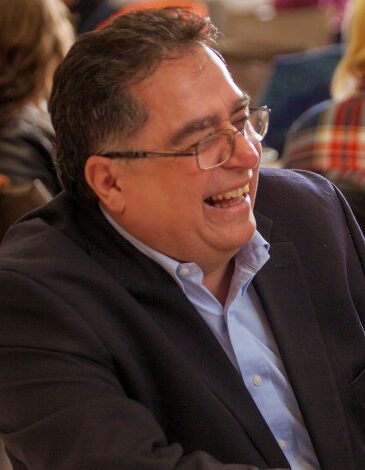 “Levi Rickert (pictured),was an unlikely publisher when he founded the digital publication Native News Online nearly 10 years ago,” the publication wrote Monday. Today, “the online publication has become one of the country’s most-read news sites covering Indian Country. The site draws more than 250,000 readers each month, and its social media following has grown to nearly half a million active and engaged readers.”
“Levi Rickert (pictured),was an unlikely publisher when he founded the digital publication Native News Online nearly 10 years ago,” the publication wrote Monday. Today, “the online publication has become one of the country’s most-read news sites covering Indian Country. The site draws more than 250,000 readers each month, and its social media following has grown to nearly half a million active and engaged readers.”
New York’s WABC-TV reports on Johnny Pacheco (video)
The death Monday of bandleader Johnny Pacheco was widely reported beyond his core salsa-loving audience. In addition to the Monday obituary, for instance, The New York Times ran a piece by Ed Morales Wednesday, updated Friday, headlined, “15 Essentials From Johnny Pacheco and Fania Records, the ‘Motown of Salsa’: He packaged New York attitude and a new spin on Afro-Cuban beats, and changed Latin music forever. The flutist, composer, arranger and bandleader died this week at 85.” Gilbert Cruz, the first Latino culture editor at the Times, messaged Journal-isms, “I suggested the idea to our Pop Music editor Caryn Ganz and she assigned the writer.”
- CNN announced changes Wednesday to its weekday morning and dayside lineup, “with new assignments for Victor Blackwell, Ana Cabrera, Alisyn Camerota and Brianna Keilar. In addition, the network announced new roles for Jim Acosta and Boris Sanchez on weekends. These changes will be effective in April.”
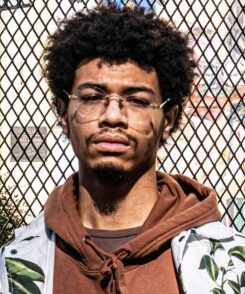 In the District of Columbia, “Local independent journalist and documentarian Kian Kelley-Chung (pictured), was one of more than 40 people arrested by the Metropolitan Police Department at a racial justice protest in August,” Margaret Barthel reported Feb. 11 for dcist. “Officers seized his camera equipment, and he spent the night in a holding cell before being released without charges the following day. Kelley-Chung says he didn’t get his camera equipment or cell phone back from police custody for 10 weeks. The experience took a financial and emotional toll on the 23-year-old Black journalist . . .”Now, he’s suing the department, acting police chief Robert Contee III and the District for violations of the First and Fourth Amendment; his rights as a journalist under the Personal Privacy Protection Act, which protects journalists’ work product from warrantless searches; and for loss of income as a freelance journalist. Kelley-Chung is seeking compensatory and punitive damages, as well as an injunction to require the District to prevent police officers from interfering with journalists or the public recording protests. . . .”
In the District of Columbia, “Local independent journalist and documentarian Kian Kelley-Chung (pictured), was one of more than 40 people arrested by the Metropolitan Police Department at a racial justice protest in August,” Margaret Barthel reported Feb. 11 for dcist. “Officers seized his camera equipment, and he spent the night in a holding cell before being released without charges the following day. Kelley-Chung says he didn’t get his camera equipment or cell phone back from police custody for 10 weeks. The experience took a financial and emotional toll on the 23-year-old Black journalist . . .”Now, he’s suing the department, acting police chief Robert Contee III and the District for violations of the First and Fourth Amendment; his rights as a journalist under the Personal Privacy Protection Act, which protects journalists’ work product from warrantless searches; and for loss of income as a freelance journalist. Kelley-Chung is seeking compensatory and punitive damages, as well as an injunction to require the District to prevent police officers from interfering with journalists or the public recording protests. . . .”
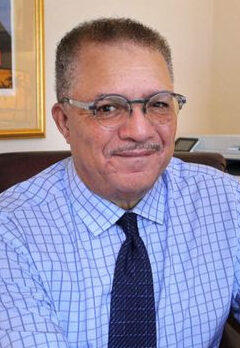 While DeWayne Wickham (pictured), founding dean of the journalism school at Morgan State University, “will be closing the door on his Morgan days in a few months, don’t call it a retirement,” David Zurawik wrote Feb. 11 for The Baltimore Sun. ” ‘I am stepping down, not retiring,’ he said emphatically. It’s easy to believe Wickham, given that he is a dynamo of ideas and full of energy. He’s had discussions about writing a book and is also working with actor-producer Tim Reid (‘Frank’s Place’ and ‘Sister, Sister’) on possible documentaries, hoping to benefit from new interest by Netflix and Verizon in storytelling in the Black community. Several journalism schools have come aggressively knocking, something he is not all that interested in. Wickham can’t imagine not working. . . .”
While DeWayne Wickham (pictured), founding dean of the journalism school at Morgan State University, “will be closing the door on his Morgan days in a few months, don’t call it a retirement,” David Zurawik wrote Feb. 11 for The Baltimore Sun. ” ‘I am stepping down, not retiring,’ he said emphatically. It’s easy to believe Wickham, given that he is a dynamo of ideas and full of energy. He’s had discussions about writing a book and is also working with actor-producer Tim Reid (‘Frank’s Place’ and ‘Sister, Sister’) on possible documentaries, hoping to benefit from new interest by Netflix and Verizon in storytelling in the Black community. Several journalism schools have come aggressively knocking, something he is not all that interested in. Wickham can’t imagine not working. . . .”
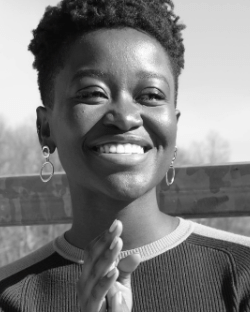 The Student Press Law Center reports that “In honor of Black History Month, SPLC is celebrating the rich history of student journalism at historically Black colleges and universities Morgan State University, Florida A&M University, and North Carolina A&T State University. In the series’ first interview of student editors, Oyin Adedoyin (pictured), editor-in-chief of Morgan State University’s Spokesman, was asked about the future of journalism. “I see more news that is very much geared towards minority groups that really need to be covered and the information that really needs to be [broadcast],” she said. “I see that kind of expansion as the future of news, which will then obviously open up more opportunities for more diverse storytellers, and more diverse journalists to shine in the field.”
The Student Press Law Center reports that “In honor of Black History Month, SPLC is celebrating the rich history of student journalism at historically Black colleges and universities Morgan State University, Florida A&M University, and North Carolina A&T State University. In the series’ first interview of student editors, Oyin Adedoyin (pictured), editor-in-chief of Morgan State University’s Spokesman, was asked about the future of journalism. “I see more news that is very much geared towards minority groups that really need to be covered and the information that really needs to be [broadcast],” she said. “I see that kind of expansion as the future of news, which will then obviously open up more opportunities for more diverse storytellers, and more diverse journalists to shine in the field.”
- “Jamie Stockwell, who joined The Times almost three years ago from The San Antonio Express-News, will be formally taking over Race/Related, the cross-desk initiative aimed at expanding our coverage of race and attracting a more diverse readership,” Jia Lynn Yang, new national editor of the New York Times, wrote to staffers on Feb. 12.
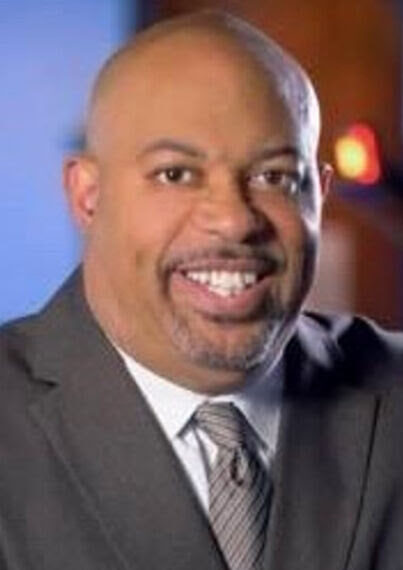 For Black History Month, Darian Trotter of KABB/WOAI in San Antonio honored Group News Director Blaise Labbe (pictured), who oversees news operations at 23 Sinclair-owned television stations across six states. “When it comes to news coverage, diversity is important because it’s the images that are portrayed that help shape people’s vision and thought processes,” Labbe said in the Feb. 8 story. “We don’t always have to see Caucasian lawyers,” Labbe explained. “There are black law experts or Hispanic law experts. There are people of color in all walks of expertise; even people of different sexual orientations. Let’s hear from those people. Driving a newsroom, it’s important that kind of diversity is in your coverage.”
For Black History Month, Darian Trotter of KABB/WOAI in San Antonio honored Group News Director Blaise Labbe (pictured), who oversees news operations at 23 Sinclair-owned television stations across six states. “When it comes to news coverage, diversity is important because it’s the images that are portrayed that help shape people’s vision and thought processes,” Labbe said in the Feb. 8 story. “We don’t always have to see Caucasian lawyers,” Labbe explained. “There are black law experts or Hispanic law experts. There are people of color in all walks of expertise; even people of different sexual orientations. Let’s hear from those people. Driving a newsroom, it’s important that kind of diversity is in your coverage.”
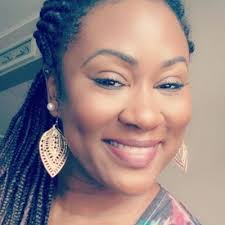 Lacretia Wimbley (pictured), a 28-year-old breaking news reporter for Pittsburgh’s largest newspaper organization, has become president of the Newspaper Guild of Pittsburgh, Rob Taylor Jr. reported Thursday for the New Pittsburgh Courier. Wimbley already spent six days as president in January when the Guild’s election committee announced it had discovered “two irregularities in the conduct of the mail-in ballot election.” Ed Blazina, who had been interim president, returned to the role as interim president. The election committee decided to hold a new election. “Turns out, the second time around was the charm for Wimbley,” Taylor wrote.
Lacretia Wimbley (pictured), a 28-year-old breaking news reporter for Pittsburgh’s largest newspaper organization, has become president of the Newspaper Guild of Pittsburgh, Rob Taylor Jr. reported Thursday for the New Pittsburgh Courier. Wimbley already spent six days as president in January when the Guild’s election committee announced it had discovered “two irregularities in the conduct of the mail-in ballot election.” Ed Blazina, who had been interim president, returned to the role as interim president. The election committee decided to hold a new election. “Turns out, the second time around was the charm for Wimbley,” Taylor wrote.
- “The Society of Professional Journalists has teamed with the Asian American Journalists Association (AAJA) to put a spotlight on threats, [harassment] and violence toward Asian Americans and Pacific Islanders (AAPI), including journalists,“ John Eggerton wrote Feb. 13 for Broadcasting & Cable. Eggerton also wrote, “SPJ also called on journalists to report on the issue, which includes harassment of AAJA members and is rooted, in part, they say in ‘untrue and racist assumptions’ related to the coronavirus pandemic.”
- “A Philadelphia SAG-AFTRA board member has resigned after members of the actors and broadcasters union called out the labor organization’s tepid response to a racist, anti-Asian meme he had posted,” Juliana Feliciano Reyes reported Wednesday for the Philadelphia Inquirer. “John Mitchell, an actor who served on the elected board of Philadelphia SAG-AFTRA, which represents 3,000 people in the region, posted a meme of President Joe Biden done up with stereotypical East Asian features. ‘Introducing our 46th president,’ the meme reads. ‘Sum Dum F—.’ The post, which went up shortly after Biden’s inauguration, has since been taken down.”
- The Chicago Tribune has become the latest news operation to curtail the use of mug shots. “Media companies are examining their need to do better around questions of fairness. This is particularly critical in recognizing how their work might reinforce racial stereotypes and amount to punitive coverage of people who enter the criminal justice system — the majority of whom come from underprivileged backgrounds,” the newspaper declared on Feb. 9. “This policy prioritizes public safety, news judgment and compassionate coverage, and acknowledges inconsistencies in the criminal justice system that affect which mug shots are released and published online.” The National Association of Black Journalists applauded the move.

- Rowaida Abdelaziz of HuffPost, Carlos Ballesteros of Injustice Watch, Terry Jones of The Advocate, and Ishan Thakore, an independent journalist, will serve as IRE’s 2021 Journalists of Color Investigative Reporting Fellows,” Investigative Reporters and Editors announced. “IRE’s yearlong fellowship is designed to increase the range of backgrounds, experiences and interests within the field of investigative journalism, where diverse perspectives are critically important. The 2021 fellowship program is open to U.S. journalists of color with at least three years of post-college work experience.”
- The Pedro Gomez Foundation will support scholarships for students at the Walter Cronkite School of Journalism and Mass Communication at Arizona State University, and it plans to expand to other passions of Gomez’s, Katherine Fitzgerald reported Feb. 14 for the Arizona Republic. She described Gomez, 58, who died at home unexpectedly on Feb. 7, as “A former columnist at The Arizona Republic, a trailblazer at ESPN, a mentor to many and a friend to all.” No cause of death has been given.
- “The first recipient of the Angelo B. Henderson Endowed Scholarship at the University of Kentucky is Tessa McLamb, a senior broadcasting major from Louisville,” Henderson’s wife, Felecia D. Henderson, announced on LinkedIn. Henderson, who died in 2014, was a Detroit radio personality who won a Pulitzer Prize in 1999 while at The Wall Street Journal. He earned a bachelor of arts in journalism in 1985 from the university.
- “Worth.com — a financial, wealth management and lifestyle magazine — has come out with a new list: ”Groundbreakers 2021: 50 Women Changing the World‘ “ (scroll down), Tom Jones reported Friday for the Poynter Institute. “The list includes many women in media, including Simon & Schuster publisher Dana Canedy, ‘The Late Show with Stephen Colbert‘ head writer Ariel Dumas and Reddit COO Jen Wong. The list includes one on-air TV journalist: Fox News anchor Harris Faulkner. . . .”
- “When Cherokee leader Sequoyah introduced a written version of his language 200 years ago, his fellow Cherokees were skeptical,” Indian Country Today reported Feb. 4. “He eventually won them over and now the Cherokee Syllabary evolved to be included on typewriters, printing presses, and even mobile phone apps. This year the Cherokee Nation is celebrating the bicentennial of its written language. Native America Calling will get the history of Sequoyah’s 12-year process to develop the series of symbols and letters that represent the spoken language.”
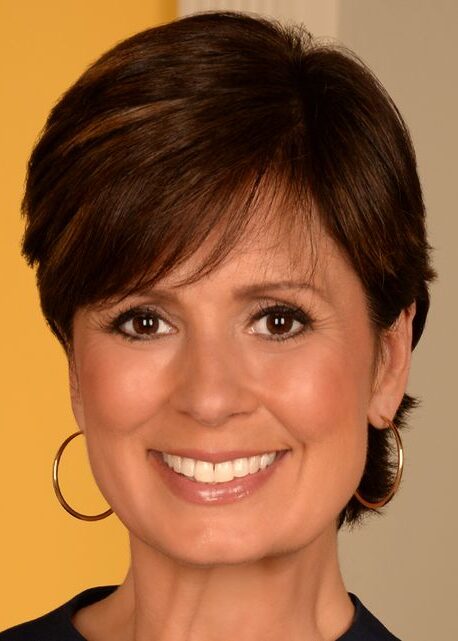 Maggie Rodríguez (pictured), has been off the air and a full-time mom to her two children since she left CBS a decade ago, Veronica Villafañe reported Thursday for her Media Moves column. She’ll join Danny New on Tampa Bay station WFLA News Channel 8’s lifestyle weekday 10-11 am morning show, effective Feb. 22. Rodríguez co-anchored “The Early Show with Harry Smith” from 2008 to 2010.
Maggie Rodríguez (pictured), has been off the air and a full-time mom to her two children since she left CBS a decade ago, Veronica Villafañe reported Thursday for her Media Moves column. She’ll join Danny New on Tampa Bay station WFLA News Channel 8’s lifestyle weekday 10-11 am morning show, effective Feb. 22. Rodríguez co-anchored “The Early Show with Harry Smith” from 2008 to 2010.
- The GroundTruth Project has announced the launch of Report for the World, its newest service program, and issued a call for applications for local journalists to serve communities in Nigeria and India, Michael Karam wrote Thursday for Report for the World. The organization “will match local newsrooms with talented emerging journalists to report on under-covered issues around the globe, beginning with six ‘corps members’ in two partner newsrooms this spring — Scroll.in in India and TheCable in Nigeria.”
- Starting Feb. 24, Jane Coaston will be the new host of “The Argument,” The New York Times’ first Opinion podcast, the news organization announced Feb. 17. “The show launched in 2018 as a space for candid debates about the big issues shaping our world. Its mission is to both inform your opinions and to understand how the other side thinks. . . . Host Jane Coaston, a self-described ‘quirky, curious, queer and Christian midwesterner,’ says: Even in the era of social media, there are too few platforms available for people to argue effectively — with the purpose of gaining insight and information and, who knows, even changing some minds (even our own). I want this show to be that place. ‘ “
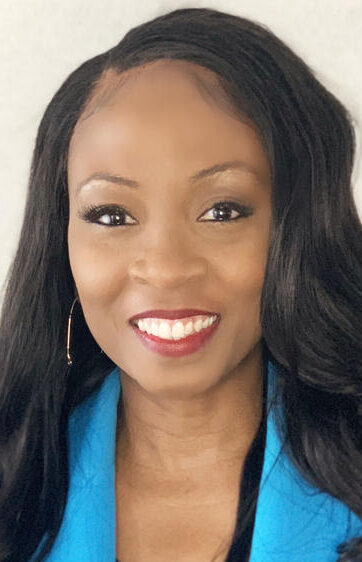 “Former TV reporter Jenell Walton (pictured), is returning to her broadcasting roots as Cincinnati Public Radio’s vice president of content beginning March 1,” WVXU announced Feb. 12. “The Cincinnati native was a reporter and anchor at WCPO-TV, and a reporter for The List nationally syndicated news magazine and WLWT, for 16 years before working for Cincinnati Metro, the Urban League of Greater Southwestern Ohio and the Cincinnati USA Convention & Visitors Bureau.”
“Former TV reporter Jenell Walton (pictured), is returning to her broadcasting roots as Cincinnati Public Radio’s vice president of content beginning March 1,” WVXU announced Feb. 12. “The Cincinnati native was a reporter and anchor at WCPO-TV, and a reporter for The List nationally syndicated news magazine and WLWT, for 16 years before working for Cincinnati Metro, the Urban League of Greater Southwestern Ohio and the Cincinnati USA Convention & Visitors Bureau.”
- Kayce Ataiyero, former journalist and current managing director of communications for the Joyce Foundation, was featured in a Chicago Tribune piece, “9 of Chicago’s most influential Black leaders are ensuring 2021 moves the diversity, equity and inclusion needle forward.” Ataiyero has worked at the Chicago Tribune, the News and Observer in Raleigh, N.C., the Philadelphia Inquirer and the Washington Post. Ataiyero “said she’s familiar with being the only Black person at the table,” Darcel Rockett wrote for the Tribune Feb. 11. “She said she often refers to it as ‘being both an asset and an assignment.’ ”
- “Mexican authorities must undertake a swift and credible investigation into the attack on reporter Edgar Leyva Mendoza, determine whether he was targeted for his work, and guarantee his safety,” the Committee to Protect Journalists said Wednesday. “On February 3, in Ocotlán, in the southern Mexican state of Oaxaca, two unidentified men in a car pulled up to a plot of land where Leyva, his sister, and his aunt were working, and asked for the journalist; when his aunt and sister approached the vehicle, the men opened fire, according to Leyva, who spoke to CPJ in a phone interview, and news reports.” An official with the Federal Mechanism for the Protection of Human Rights Defenders and Journalists confirmed to CPJ “that Leyva is in the process of being incorporated in a protection program but was unable to provide specifics.”
- ”It was a bleak start to the year for independent journalists in Cuba,” Marina Estarque reported Feb. 10 for LatAm Journalism Review. “There were 38 violations against press freedom in the country in January 2021, an increase of 124 percent compared to the same month in 2020, according to a survey by the Cuban Institute for Freedom of Expression and of the Press (ICLEP, for its acronym in Spanish). In part, the skyrocketing of the cases can be attributed to the suppression of a demonstration on Jan. 27, but journalists and organizations in the country believe that attacks on the press are part of a broader escalation of aggressions and are likely to continue throughout the year.”
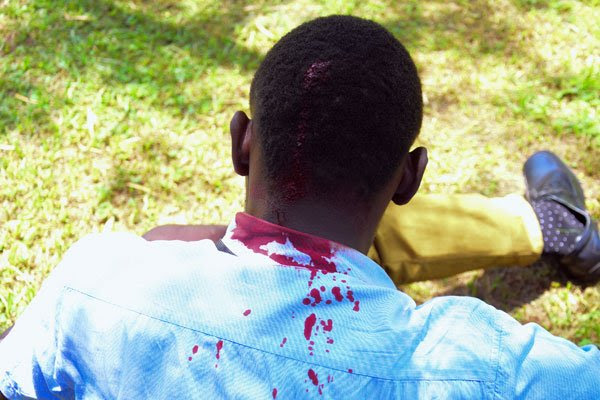
- ”Journalist bodies have condemned . . . the brutal attacks by the military on journalists as they do their work,” The Daily Monitor in Uganda reported Thursday. Daniel Kalinaki, general manager Editorial for the Nation Media Group-Uganda, said, “The security agencies continue to operate without empathy, regard to human rights or even humanity. With these incessant attacks on journalists, as well as other citizens, it is hard to see the difference between this and the [former presidents Apollo Milton] Obote and [Idi] Amin governments. Uganda and Ugandans deserve better.”
- Reporters Without Borders said Tuesday it joins Journalist in Danger (JED), its partner organization in Democratic Republic of Congo, “in condemning the high-handed methods that the interim governor of the northwestern province of Mongala has been using to silence local media outlets. Radio Liberté Lisala director Erick Ngunde had just hosted a programme about political tension and conflicts in the province on 13 February when interim governor Clémentine Sole stormed into the radio station with about 20 policemen and had him arrested. When reached by RSF, Sole said she had been obliged to take this action because Ngunde had interviewed a politician ‘who sows trouble in the province’ and because his radio station continues to ‘insult the authorities’ despite her repeated ‘ warnings.’ ”
- Since Feb. 11, security forces have detained at least six journalists in Myanmar, the Committee to Protect Journalists said Tuesday, “and the military leadership, which took power in a coup in early February, sparking nationwide protests, have changed laws to allow for warrantless searches, detentions without court approval, and enhanced surveillance, according to reports by international and local news sources. ‘Myanmar’s feared media clampdown is coming to harsh fruition with rising threats to journalists,’ said Shawn Crispin, CPJ’s senior Southeast Asia representative. . . . ” Columbia Journalism Review posted a podcast, “Myanmar Now: How to run a paper during a coup.”
To subscribe at no cost, please send an email to journal-isms+subscribe@groups.io and say who you are.
Facebook users: “Like” “Richard Prince’s Journal-isms” on Facebook.
Follow Richard Prince on Twitter @princeeditor
Richard Prince’s Journal-isms originates from Washington. It began in print before most of us knew what the internet was, and it would like to be referred to as a “column.” Any views expressed in the column are those of the person or organization quoted and not those of any other entity. Send tips, comments and concerns to Richard Prince at journal-isms+owner@
View previous columns (after Feb. 13, 2016).
View previous columns (before Feb. 13, 2016)
- Diversity’s Greatest Hits, 2018 (Jan. 4, 2019)
- Book Notes: Is Taking a Knee Really All That? (Dec. 20, 2018)
- Book Notes: Challenging ’45’ and Proudly Telling the Story (Dec. 18, 2018)
- Book Notes: Get Down With the Legends! (Dec. 11, 2018)
- Journalist Richard Prince w/Joe Madison (Sirius XM, April 18, 2018) (podcast)
- Richard Prince (journalist) (Wikipedia entry)
- February 2018 Podcast: Richard “Dick” Prince on the need for newsroom diversity (Gabriel Greschler, Student Press Law Center, Feb. 26, 2018)
- Diversity’s Greatest Hits, 2017 — Where Will They Take Us in the Year Ahead?
- Book Notes: Best Sellers, Uncovered Treasures, Overlooked History (Dec. 19, 2017)
- An advocate for diversity in the media is still pressing for representation, (Courtland Milloy, Washington Post, Nov. 28, 2017)
- Morgan Global Journalism Review: Journal-isms Journeys On (Aug. 31, 2017)
- Diversity’s Greatest Hits, 2016
- Book Notes: 16 Writers Dish About ‘Chelle,’ the First Lady
- Book Notes: From Coretta to Barack, and in Search of the Godfather
- Journal-isms’ Richard Prince Wants Your Ideas (FishbowlDC, Feb. 26, 2016)
- “JOURNAL-ISMS” IS LATEST TO BEAR BRUNT OF INDUSTRY’S ECONOMIC WOES (Feb. 19, 2016)
- Richard Prince with Charlayne Hunter-Gault,“PBS NewsHour,” “What stagnant diversity means for America’s newsrooms” (Dec. 15, 2015)
- Book Notes: Journalists Follow Their Passions
- Book Notes: Journalists Who Rocked Their World
- Book Notes: Hands Up! Read This!
- Book Notes: New Cosby Bio Looks Like a Best-Seller
- Journo-diversity advocate turns attention to Ezra Klein project (Erik Wemple, Washington Post, March 5, 2014)
.

